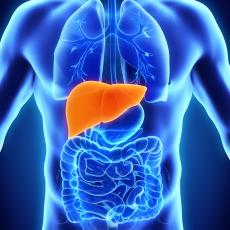
A liver transplant is a surgical process through which a liver, that no longer functions properly or in case of a liver failure, is replaced with a healthy liver. The liver donor can be a deceased person or a living person who can donate a portion of a healthy liver.
The liver is a crucial organ in the human body. It performs multiple functions that include processing nutrients, medications, and hormones. The production of bile, which helps absorb cholesterol and other fats, is also a function of the liver. Apart from these, making proteins, preventing infections, and removing bacteria and toxins are also the function of the liver. A patient is usually recommended to undergo liver transplant surgery when high on complications and reaches an end-stage of chronic liver disease.
Reasons for Liver Failure or Chronic Liver Disease
- Hepatitis B and C
- Excessive alcohol consumption
- Genetic diseases affecting the liver
- Diseases that affect the bile duct [bile duct are the tubes that carry bile away from the liver]
- Non-alcoholic fatty liver eventually builds up fat in the liver, causing inflammation of the liver.
Liver transplant surgery carries a risk of significant complications. There are risks associated with the procedure itself. But under the care of the best liver transplant hospital, these challenges can be overcome easily. Let us now discuss how liver transplants happen.
Who Needs To Undergo Liver Transplant
Patients who require a liver transplant can have a variety of symptoms, including Jaundice (yellowing of the eyes), Ascites (fluid in the abdomen), Hepatic Encephalopathy (confusion or even coma), and bleeding in the upper and lower gastrointestinal tract from varices (large veins that form in the esophagus or food pipe in patients with cirrhosis). Some patients may have years of ill health, whereas, in other patients, symptoms may develop abruptly and suddenly, for instance, with bleeding varices. In some types of Cirrhosis, for instance, Primary Sclerosing Cholangitis (PSC), other symptoms may be prominent such as itching. Additional symptoms experienced by patients who require a liver transplant may include severe fatigue, frequent bruising, or loss of muscle mass. Patients, or their partners, may also notice diminished sexual drive.
In patients with cirrhosis, primary liver cancer (hepatoma or hepatocellular carcinoma) is an important complication that can often be detected by ultrasound, CT, or MRI scan at an early stage, when it can still be cured by transplant. A patient who requires a liver transplant, for this reason, may have surprisingly few symptoms as they may not have a failure of the non-cancerous liver. In children, a frequent reason for liver transplant is Biliary Atresia, which is the failure of the bile ducts, the plumbing system in the liver, to develop in the womb.
Babies with this condition develop deep jaundice shortly after birth. Although a surgical repair may be successful in some infants, many children with this condition may again become jaundiced and develop other symptoms of liver failure such as ascites. An uncommon but important indication for liver transplant in both children and adults is acute ("fulminant") liver failure. A person with a previously normal liver experiences severe damage to their liver and rapidly lapses into a coma. Deterioration in renal function is quite common in patients with liver failure. This may occasionally lead to kidney failure requiring dialysis before transplant.
How to Prepare for Surgery
If your doctor recommends a liver transplant, you may be referred to a transplant center. You're also free to select a transplant center on your own or choose a center from your insurance company's list of preferred providers. When you're considering transplant centers, you may want to:
- Learn about the number and type of transplants the center performs each year.
- Ask about the transplant center's liver transplant survival rates.
- Compare transplant center statistics through the database maintained by the Scientific Registry of Transplant Recipients.
- Understand the costs that will be incurred before, during, and after your train plant. Costs will include tests, organ procurement, surgery, hospital stays, and transportation to and from the center for the procedure and follow-up appointments.
- Consider additional services provided by the transplant center, such as coordinating support groups, assisting with travel arrangements, helping with local housing for your recovery period, and offering referrals to other resources.
- Assess the center's commitment to keeping up with the latest transplant technology and techniques, which indicates that the program is growing.
The Bottom Line
People who receive a liver from a living donor often have better short-term survival rates than those who receive a deceased-donor liver. But comparing long-term results is difficult because people who have a living donor usually have a shorter wait for a transplant and aren't as sick as those who receive a deceased-donor liver. Your chances of a successful liver transplant and long-term survival depend on your particular situation.
Also read about:
5 Common Bookkeeping Mistakes lead business downfall
5 Factors to Consider when Completing Vendor Due Diligence
7 Bookkeeping Service benefits for IT Staffing Business




